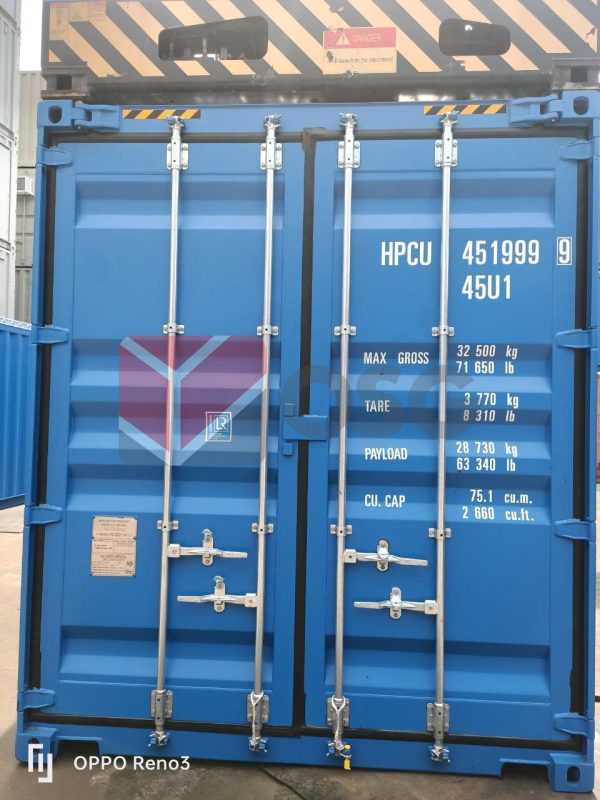Exploring the Future of Shipping Container Architecture and Design Trends

In recent years, shipping container architecture has moved from a niche interest to a legitimate, eco-friendly, and cost-effective solution for building sustainable homes, offices, and commercial spaces. This innovative design approach, which initially sparked curiosity among architects and sustainability advocates, has now evolved into a global trend. As we look ahead, the future of shipping container architecture is shaped by emerging design trends and technological advancements that push the boundaries of what is possible. In this article, we explore the future of shipping container architecture and the design trends that are transforming this unique construction method.
1. Eco-Friendly Construction
The environmental benefits of reusing shipping containers for construction have been widely praised, and this trend is likely to grow even stronger in the future. As more consumers become conscious of the ecological footprint of traditional building materials, container architecture offers an environmentally responsible alternative. By upcycling shipping containers, builders can reduce waste and conserve energy that would otherwise be spent on producing new materials.
Incorporating green technology into shipping container structures is becoming more common as well. Future designs will likely include features such as solar panels, rainwater harvesting systems, and energy-efficient insulation, making these buildings not only eco-friendly but also self-sustaining. The growing interest in renewable energy sources will ensure that container architecture remains at the forefront of sustainable building practices.
2. Modular and Prefabricated Design
Shipping container architecture naturally lends itself to modular design, and this trend is gaining momentum as developers explore the possibilities of prefabrication. Modular designs offer flexibility, allowing structures to be expanded or rearranged as needed. This is particularly appealing for projects that require scalability, such as housing developments, emergency shelters, or commercial spaces that might need to grow in the future.
Prefabricated shipping container structures can be assembled quickly and efficiently, which reduces construction time and labor costs. As advancements in technology make prefabrication more accessible, it is likely that we will see a surge in modular container projects. This trend will make container architecture an even more viable solution for urban housing shortages and disaster relief efforts.
3. Customizable Living Spaces
In the past, shipping container homes were seen as utilitarian and minimalistic. However, recent design trends have shifted towards creating personalized, comfortable, and stylish living spaces. Architects and designers are finding ways to make container homes feel less industrial and more like traditional houses, with the ability to customize interiors to meet the preferences of homeowners.
Future container homes will likely continue to embrace this trend by offering more personalization options, including high-end finishes, smart home technology, and innovative layouts that maximize space. The rise of minimalist living and the tiny home movement has also influenced this trend, as more people seek to downsize and simplify their lives without sacrificing comfort or style.
4. Innovative Uses in Commercial Spaces
Shipping container architecture is not just limited to residential projects; commercial applications are becoming increasingly popular. Containers are now being used to create everything from pop-up shops and restaurants to office spaces and event venues. The flexibility of container structures allows businesses to adapt to changing market conditions and locations, making them an attractive option for startups and entrepreneurs.
Looking to the future, we can expect to see even more creative uses of containers in commercial architecture. For instance, multi-level container buildings could serve as co-working spaces or retail centers, offering a unique alternative to traditional commercial buildings. Additionally, container structures can be easily transported and relocated, making them ideal for temporary installations or mobile businesses.
5. Urban Revitalization and Smart Cities
As cities become more crowded, the need for innovative solutions to urban planning and housing shortages will drive the growth of container architecture. Shipping containers can be stacked and arranged in a variety of configurations, making them ideal for creating high-density housing solutions in urban areas. These container buildings can be used to repurpose abandoned lots or underutilized spaces, contributing to urban revitalization efforts.
In the future, shipping container architecture will likely play a key role in the development of smart cities. As cities embrace new technologies to improve infrastructure, container buildings can be integrated with smart technology to enhance sustainability, energy efficiency, and connectivity. For example, container-based housing developments could feature shared amenities such as solar power, electric vehicle charging stations, and smart grids that optimize energy use.
6. Integration of Advanced Materials and Technology
The future of shipping container architecture will also be shaped by advancements in materials science and technology. Lightweight, high-performance materials such as carbon fiber and advanced insulation systems can be used to improve the structural integrity and energy efficiency of container buildings. Additionally, innovations in 3D printing technology could allow for more complex and customized container designs that are tailored to specific needs.
Smart technology will continue to be integrated into container homes and buildings, allowing for greater control over energy consumption, lighting, and security systems. With the growing popularity of the Internet of Things (IoT), future container buildings may be equipped with smart sensors that monitor environmental conditions and optimize energy use in real-time.
Conclusion
The future of shipping container architecture is bright, with exciting possibilities driven by eco-consciousness, modular design, and technological innovation. As the world continues to grapple with challenges such as climate change, urbanization, and housing shortages, shipping container architecture offers a sustainable, adaptable, and cost-effective solution. With new trends in customization, smart technology, and eco-friendly construction, the design of shipping container structures will continue to evolve, making them a key player in the architecture of the future. Whether used for residential, commercial, or urban revitalization projects, shipping containers are poised to transform the way we think about building design.

